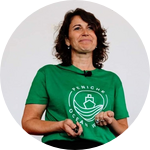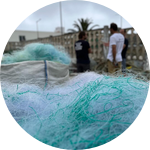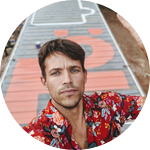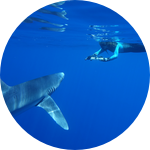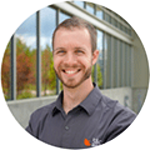About This Project
This project investigates the fabrication of low-cost, 3D printable smart buoys for monitoring the condition for a regenerative seaweed farm at Nazare in Portugal. The buoys focus on characterizing the marine environment at the biggest wave in the world.
Ask the Scientists
Join The DiscussionWhat is the context of this research?
The way scientists observe the oceans has come a long way. In the past, they used to rely on direct measurements and expensive technologies, but things are getting smarter now. New devices and the Internet of Things (IoT) are making it possible to gather more accurate and detailed information over larger areas. For regenerative seaweed farms, there is a significant challenge in that the *soil* is constantly turning over and both the crops and conditions can be invisible. Low cost sensor platforms can assist farmers in understanding the ocean and enhancing their ability to respond to potential environmental threats that may impact the farm.
What is the significance of this project?
Producing low-cost smart buoys is crucial for the advancement of regenerative seaweed farms. These smart buoys can play a vital role in monitoring various environmental factors and biological conditions of aquaculture systems, especially in seaweed farming. By developing affordable technology that can remotely monitor and collect real-time data, seaweed farmers can optimize their production processes, reduce costs, and enhance the sustainability of seaweed cultivation. Additionally, the use of smart buoys can contribute to a better understanding of how seaweed interacts with its surrounding environment, ultimately supporting the regenerative nature of seaweed farms
What are the goals of the project?
We will create four low-cost prototype ocean buoys that can measure temperature, pH, salinity, wave height, and wind direction. The prototype will take about six months including the design, manufacturing, and initial testing. Our plan has two main stages: first, we will lab-test the buoy to make sure it can measure conditions accurately in controlled environments.
The second stage will involve testing the buoys in the real environment at the largest wave in the world. We will place multiple buoys in different areas and monitor their performance for three months. This will help us understand how well the buoys work in real-world conditions and how well they can help with seaweed farming operations.
Budget
The budget items are integral to the completion of the research project:
- The extrusion of compounded fishing net and waste carbon fiber materials is necessary for creating high-quality material suitable for 3D printing the parts of our maritime sensor buoys.
- Design and prototyping electronics are crucial for creating the CAD models of the buoys and other necessary design aspects.
- Testing and validation costs will cover the necessary resources to test our sailing drones under various conditions and validate our energy efficiency and sustainability measures.
- Lastly, the miscellaneous costs will cover any unforeseen expenses that may arise during the project.
Endorsed by
 Project Timeline
Project Timeline
The timeline outlines the process for developing and testing buoys in real world environments. The stages will be: design finalization, prototype manufacturing, lab testing, analysis, refinement, field testing, and final analysis and refinement. Each stage involves specific tasks such as gathering feedback, conducting testing, and making refinements based on the results.
Jul 29, 2024
Project Launched
Aug 20, 2024
Initial Field Testing
Aug 30, 2024
Analysis and Refinement
Oct 10, 2024
Second Analysis and Refinement
Oct 20, 2024
Open water testing
Meet the Team
Nathaniel Petre
Nathaniel Petre is a design engineer who works predominantly with 'agnostic manufacturing' to find practical solutions focused on the blue economy.
After 3D printing the world's first surfboard made from algae, Nathaniel began using ocean plastic waste as a resource for local, agile manufacturing.
Over the last four years, he's built the largest 3D printer in the Caribbean and then the largest 3D printer in the UK to make fully recycled, race-proven parts.
Nate's projects aim to equip both the community and researchers with the tools to develop a platform for using materials as varied as ocean plastic to bio-fabricated structures to sustain an economy and an ecosystem locally.
Nate has a non-academic engineering background and a college education from an art school in New York City.
Elisabeth Reuter
Lizzy has a background in engineering science (TUM) and shifted her career focus towards marine science over the past years.
She has worked on projects for coastal protection in the Ebro Delta (spain) and minimal-invasive biologgers for blue sharks and mobula rays in the Azores arquipelago. Currently she is working in the maritime laboratory in Guia, PT.
Always looking for ways to join her engineering background and passion for marine life, she is excited to partner up with DAM and Hope Zones foundation to create a platform of accessible ocean sensors, making much needed environemtal data of the local coastline available and working towards protection and a sustainable use of the portuguese coast.
Daniel Barousse
Daniel Barousse is the CEO and Co-Founder at Slice Engineering and the Founding Member of the FORMI association.
Project Backers
- 8Backers
- 102%Funded
- $10,230Total Donations
- $1,278.75Average Donation
